I've played as much as I can for today. Tomorrows work will be putting swing limiters on the edger to keep the pressure rolls from riding on the face of the textured rollers.
You are using an out of date browser. It may not display this or other websites correctly.
You should upgrade or use an alternative browser.
You should upgrade or use an alternative browser.
Old School Sawmill Edger
- Thread starter Brian Rupnow
- Start date

Help Support Home Model Engine Machinist Forum:
This site may earn a commission from merchant affiliate
links, including eBay, Amazon, and others.
This morning I put "swing limiters" on the pressure rollers. This does two things. It prevents the spring loaded pressure rollers from being forced down on the knurled feed rollers and getting their plain faces marked up by the knurling. It also holds the gap of about 3/32" between the rollers so that it isn't so difficult to force a 1/8" thick board between the rollers to start it self feeding thru the saws. In the picture you can see the top of four #4 threaded studs with double hex nuts on them. They extend thru clearance holes in the top frame, thru the springs for the pressure rollers, and thread into the swinging mechanism which supports the top pressure rolls. By moving the nuts up or down on the threaded studs I can adjust the roller gap. Right now I have a 1/8" thick parallel setting between the rollers until some of the Loctite I used on the studs sets up.
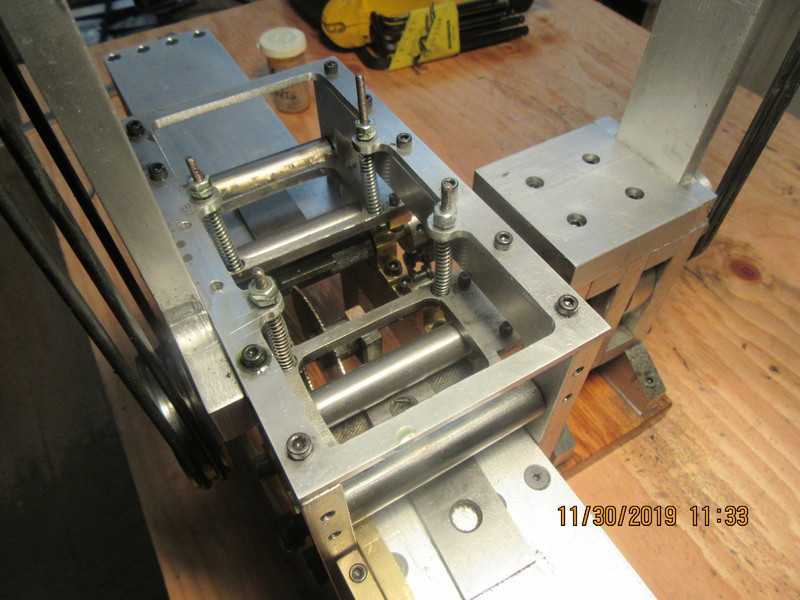

Today seen the first boards thru the edger. I'm a bit disappointed that none of my single cylinder engines have enough power to run it properly. I may try my twin cylinder opposed engine on it, however for now I wanted to see the edger actually do it's job. I have resorted to variable speed drill power, and although it is noisy, it gets the job done. I think that I need stronger springs on the pressure rollers to feed the boards completely through, but other than that it seems to do everything I want it to. I will get a video up either this afternoon or tomorrow morning.
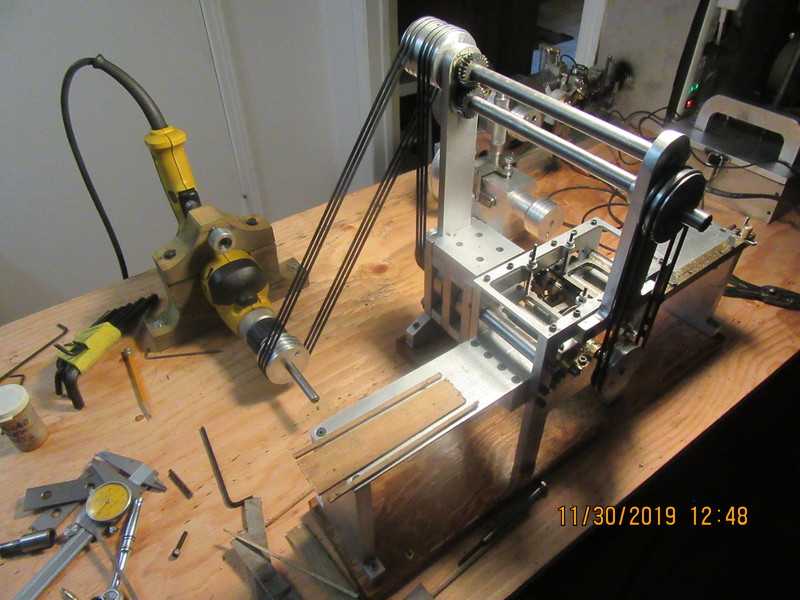

I'm getting a complete education on the care and feeding of edgers. I am edging boards but I have learned---The saw's should be running twice as fast, and the feed rollers should be twice as slow. I have the feed rollers both gripping the board and passing it through just fine. Only thing is that the saw isn't cutting fast enough to keep up, so about half way down the length of a board the saw blades stall, and the belts slip. Fortunately, this can all be addressed by different pulley combinations. I have an ever increasing bunch of different sized pulleys hanging on my machine-shop wall, from all of the crazy things I have built. If I put a board thru that is narrow enough to engage only one saw blade, things actually work pretty good.
You're making a pulley out of WHAT!!! Hey, it's free stuff. It will work fine in the application it is intended for. I didn't have any 1" aluminum plate. I coated the aluminum pulley with fast dry epoxy, and will finish it off tomorrow morning.
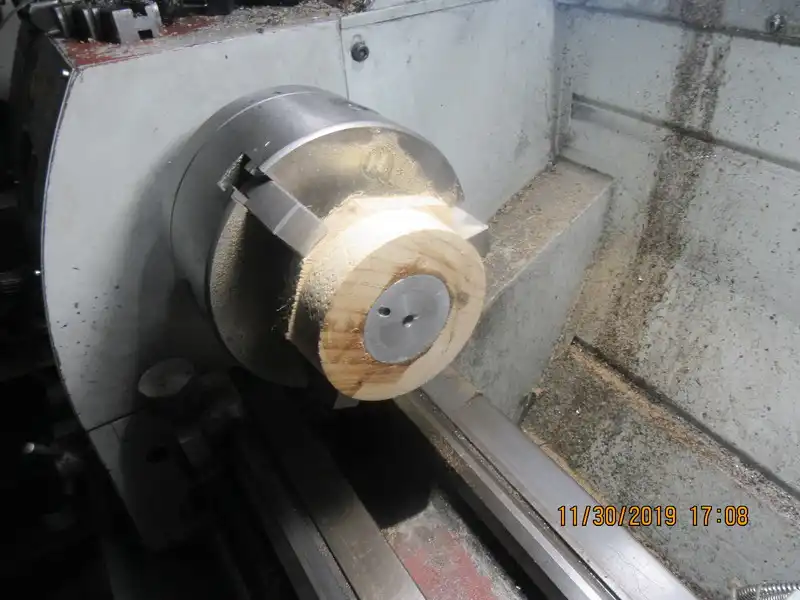

My original design had the feed rollers turning 8 times slower than the circular saws. This didn't work very well--the rolls would jam the wood into the sawblade so quickly that it would stall the saws. Next effort was to have the feed rollers turning 16 times slower than the sawblades. That worked a lot better, but would still jam the saws about halfway thru the cut and stall them. The wooden pulley I have up on the lathe right now is going to allow the feed rollers to go 32 times slower than the saws. I'll know a lot better tomorrow morning how that is going to work. It's been a fun day.
This morning we have success!!! The wooden pulley that I had up on the lathe yesterday seems to have done the trick. The edger is taking full length boards thru the saws and the feed rolls are gripping as I had intended. I had to make up an outside bearing support on the shaft which is held in my variable speed drill so as not put too much sideload on the drill bearings. This thing is noisier than I would ever have imagined. I am going to make a video now.
I have been trying unsuccessfully all afternoon to combine two separate videos into one. I can't figure it out, so two videos are going up. I strongly suggest that you watch them in order.---Brian
That's just slick!
I'm guessing the next step is to make an IC engine with the same horsepower as the drill so you can drive it from an engine you built.
I'm guessing the next step is to make an IC engine with the same horsepower as the drill so you can drive it from an engine you built.
Thank you, guys. Before I tear that set-up down I'm going to get my tachometer out and see what rpm the drill motor is turning at. It's horribly noisy, but I don't really think it's turning all that fast. EDIT---If I can trust my laser tachometer, the drill is turning at 1000 rpm, which is close to what I thought. That means the sawblades are turning at 2000 rpm. The sawblades are 2" diameter. The 1/2" diameter feed rolls are turning at 62.5 rpm.
Last edited:
When will the OSHA inspection be held?

dnalot
Project of the Month Winner !!!
That's quite a machine. So how much will you be charging for your paint sticks?
Mark
Mark
It's not so much the cost of the individual paintsticks. It's securing the timber rights from the federal government, building the camps, hiring the teams of mules and oxen, food for the loggers, and the rail transport from the paintstick reserve to my place. The price of the sawmill and the edger will only be a small portion condidered into the final cost per paintstick.
The big question here was "will the edger work" and if so then "what will be the final pulley reductions and sawblade speeds and what rpm will the feed rollers work best." I have now determined all of those factors. The initial form of the edger had far too many shafts and friction points for one of my gas engines to run. There is nothing else right now that I want to move forward and design or build so I am going to spend some time on a purpose built reducer that will give me the proper outputs and rpm's. The reducer which I used on this initial run was just one that I had setting around from 10 years ago. I want something that lets me get rid of the two top-shafts and the pulleys and o-rings associated with them.
So what does a design engineer do if he's bored?--Well of course--He designs something. In this particular case, a custom designed reducer to work with the edger. This will do three things, which may all be good. With full ball bearings on every shaft, this will cut way down on friction, and use up all the weird ball bearings that have been collecting in my tin of goodies. It also may give a far greater chance of the edger being powered by one of my gas engines, and it will keep me from totally forgetting how to cut gears with my mill and rotary table. It will also get rid of the towers and overhead shafts on the edger. I had accumulated six "bastard" ball bearings, some of which are metric and some of which are imperial, but they are all good bearings.--More will follow, tomorrow.
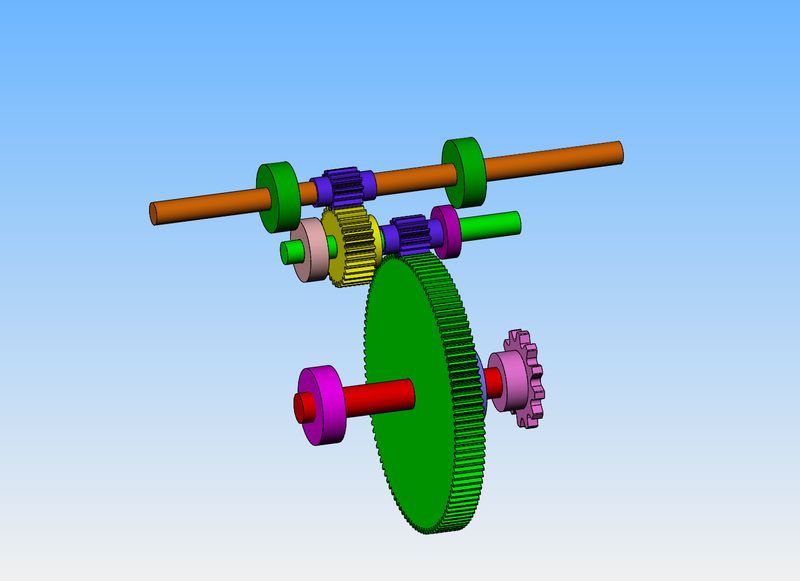

I dug around in my "someday I might use that" box, and Voila!! Not only did I find all of the orphaned bearings that I will use on my new gear reducer, but I also found a set of timing pulleys and a timing belt, which were rescued from a dead appliance?? One shaft from my reducer is going to extend from the reducer and sprocket side to the opposite side of the edger, where they will drive the sawblades.
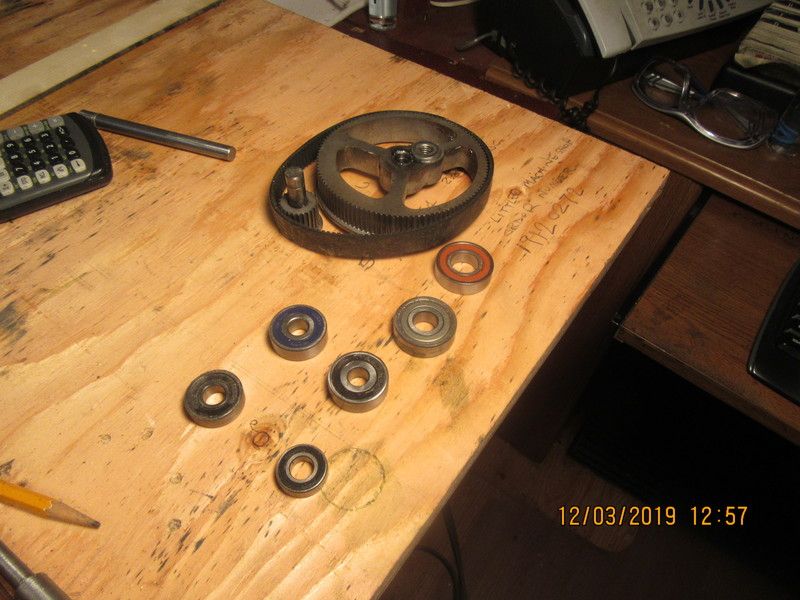

Okay---Version two!! This is a much cleaner version. The overhead towers and shafts and pulleys are gone. All of the gearing to get from 1000 rpm to 60 rpm is done by the gears inside the reducer I will build. This will dramatically cut down friction and noise. One of the gears which is running in the opposite direction in the reducer has it's shaft extended through to the far side of the edger, where a timing belt drives from the extended shaft to the saws.
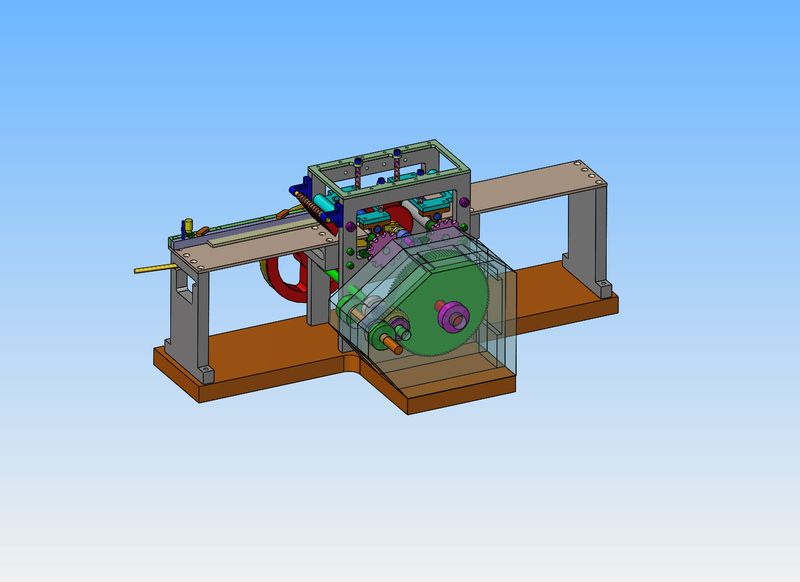
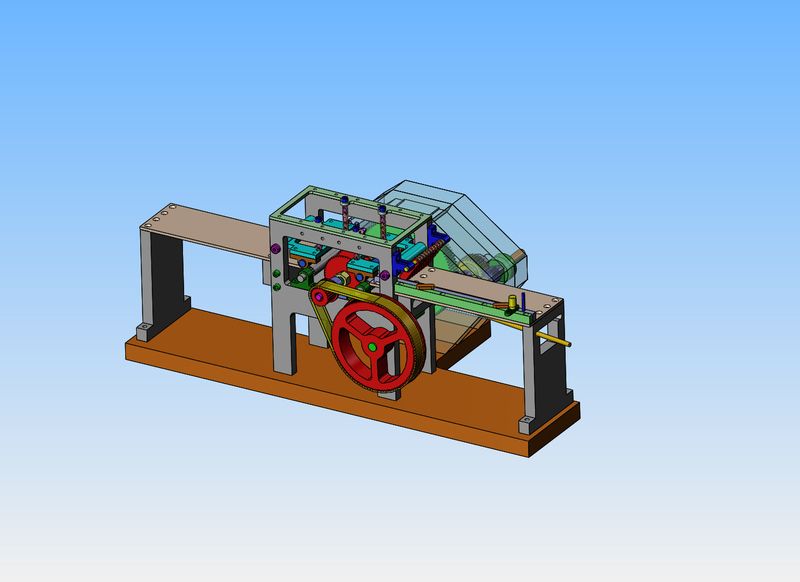


Waiting anxiously for the latest iteration. Good work.
This is an interesting project, Brian. Was the original approach based on something you'd seen, or an existing piece of equipment?
CFLBob--I grew up in a very small village in the "bush" in Ontario. My father was a logger. There were three sawmills all within walking distance of each other, one ran by water power, one ran by a steam engine, and one driven by a Cummins diesel. They all had an edger. I've probably seen a hundred edgers in my lifetime. I have never, ever, in seventy three years forgotten a piece of machinery I've seen.---Brian
Similar threads
- Replies
- 236
- Views
- 78K



